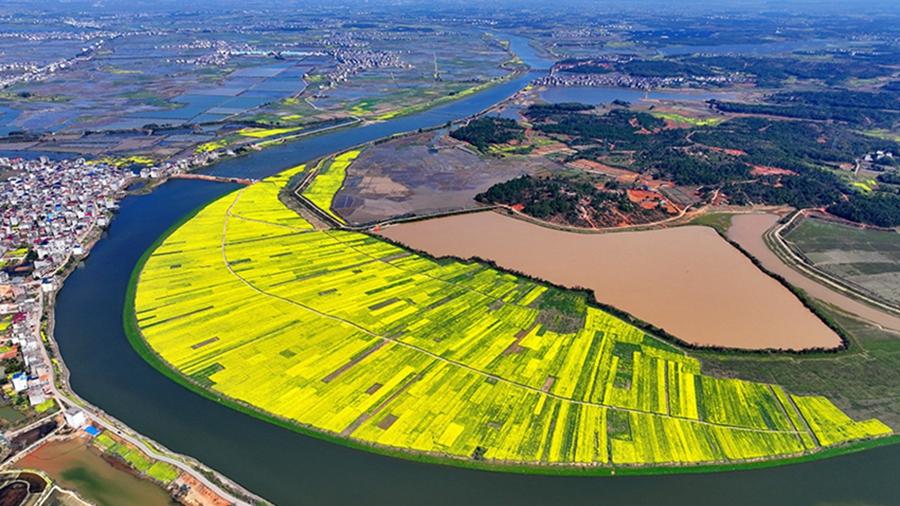Scientists confirm ability of plant leaves to absorb, accumulate airborne microplastics

Researchers from Nankai University's College of Environmental Science and Engineering conduct a plant simulation exposure experiment at Nankai University in Tianjin, north China, on April 9, 2025. (Nankai University/Handout via Xinhua)
TIANJIN, April 10 (Xinhua) -- A joint study led by Chinese scientists has demonstrated that plant leaves can absorb and accumulate airborne microplastics, revealing a direct pathway for these pollutants to enter the food chain and human bodies.
The study, published online on Wednesday in the journal Nature, was conducted by researchers from Nankai University's College of Environmental Science and Engineering, the University of Massachusetts Amherst, the Chinese Academy of Sciences' Research Center for Eco-Environmental Sciences, Northeastern University, and the Beijing Academy of Agriculture and Forestry Sciences.
While previous studies showed that soil microplastics can be absorbed by plant roots with limited upward transport, this research effort highlights airborne microplastics as a more immediate ecological threat.
Through mass spectrometry analysis, researchers detected widespread presence of polyethylene terephthalate (PET) and polystyrene (PS) polymers in plant leaves across various environments -- while also revealing that the higher the atmospheric pollution levels and the longer the leaf growth duration, the higher the concentrations of PET and PS found.
"We identified PET and PS in tree and shrub leaves near polyester factories and landfills, as well as in open-field leafy vegetables," said Li Ye, first author and PhD candidate at Nankai University in north China's Tianjin Municipality. Advanced imaging techniques revealed absorbed microplastic particles in leaves from contaminated areas.
Laboratory simulations further confirmed that corn leaves can absorb microplastics through stomata, transporting particles to vascular tissues and accumulating them in leaf trichomes.
"Global attention is intensifying on micro and nano plastic pollution, with their toxic effects on organisms increasingly documented," said Wang Lei, a professor at Nankai University's College of Environmental Science and Engineering, and co-corresponding author of the study.
A comprehensive understanding of microplastics' environmental behavior is critical for regulating these emerging contaminants. As plants form the foundation of food chains, microplastics accumulated in leaves directly enter these systems, Wang said.
The ecological and health risks posed by this pathway warrant urgent, in-depth investigation, Wang added.
Photos
Related Stories
- Chinese scientists decode genetic variations in tea plants
- New Leptobrachella species found in central China
- Chinese biologists invent new nanomaterial to enhance plant photosynthesis
- Scientists reveal relationship between shrub encroachment, herbal plant diseases
- Chinese scientists develop gene-editing method to reduce corn plant height
Copyright © 2025 People's Daily Online. All Rights Reserved.









